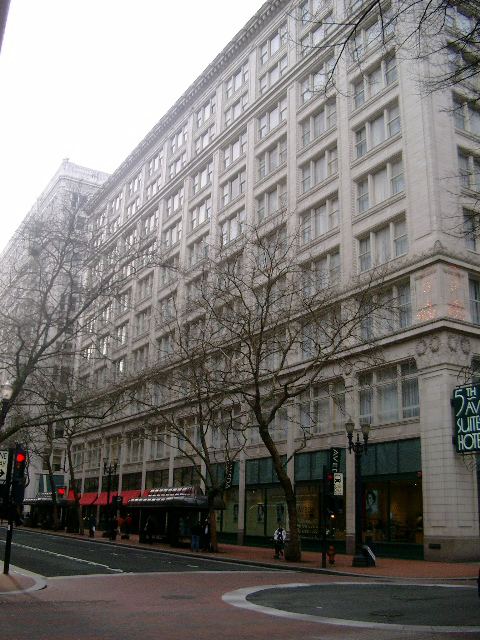 | ||
Headquarters Portland, Oregon, United States | ||
Lipman's was a department store chain based in Portland, Oregon. The company was originally known as Lipman-Wolfe & Company, named after the two founding partners, Adolphe Wolfe and his uncle, Soloman Lipman. It is now defunct. The 1912 building in downtown Portland that was the company's flagship store is listed on the National Register of Historic Places, as the Lipman–Wolfe and Company Building.
Contents
History
In 1850, Lipman and Wolfe formed a partnership in Sacramento, California during the California Gold Rush. They became prosperous merchants, expanding into Nevada during the great silver rushes. The later decline of the Comstock Lode impacted the business, prompting Wolfe to move to Portland in 1880.
Wolfe opened a new store in Portland, re-establishing his business. Floods and space limitations forced the store to move three times, the last of which was in 1912, when the flagship store was opened at Fifth and Washington Streets. The new store was just across the street from Meier & Frank's flagship store, sparking an intense rivalry.
Lipman's was well-known locally for establishing several "firsts" in Portland retail history:
By the end of its identity, the Lipman's brand had grown into a chain of six stores. Adolphe Wolfe died in 1938, passing the company on to his nephew. In the 1950s, the Wolfe family sold Lipman's to the Dayton Hudson Company, which kept the Lipman's brand as a division. Lipman's began to lose market share to Meier & Frank in the 1970s, when Marshall Field's bought all six stores in 1979. All were rebranded as Frederick & Nelson in early April of that year. In 1986, these stores, except for the downtown store which was closed, were re-branded as Crescent Outlets from The Crescent Chain based in Spokane and Owned by Frederick & Nelson. They were purchased by Lamonts in 1988.
Brief resurrection
In early 1987, F&N Acquisition Corp., the owners of Frederick's announced that they would bring back the Lipman's name as an off-price retail division. Five Frederick & Nelson stores in Oregon and four Great Clothes Outlets in Washington were to be renamed Lipman's, but the Oregon locations instead were sold to The Crescent. These stores were slightly smaller in size than normal stores and catered to "fashion-conscious 20- to 40-year-olds with money to spend on career and casual wardrobes". The division was meant to compete directly with Nordstrom along with complementing its sister store. By January 1988, sales at the stores fell short of the $125-per-square-foot target. Ownership was handed over to F&N executives and all the stores became Frederick & Nelson Red Tag Clearance Centers by mid-1988. All these stores were closed during 1990 cutbacks.
Cinnamon Bear
Lipman's is probably best remembered for the Cinnamon Bear, a popular Portland Christmas time tradition since 1937. The Cinnamon Bear was introduced as a Lipman's-sponsored radio story character, meant to count down the days until Christmas. Along with Santa Claus, his costumed likeness appeared every Christmas at Lipman's stores, handing out cookies to children. Frederick & Nelson continued the practice after absorbing the brand. The Cinnamon Bear survives today as a souvenir at the Fifth Avenue Suites. To this day, the Cinnamon Bear is aired during the holidays on K103. The Cinnamon Bear radio show can also be heard on Kool 99.1 in Eugene, Oregon every Christmas
Portland flagship store reuse
Frederick & Nelson closed the former Lipman's flagship store during a reorganization of the chain in 1986. The building was listed in the National Register of Historic Places, as the Lipman–Wolfe and Company Building, in 1988.
In 1996, after extensive renovation, the ten-story, half-block building reopened as the Fifth Avenue Suites, a 222-room hotel. In 2007, the Fifth Avenue Suites was renamed the Hotel Monaco.
